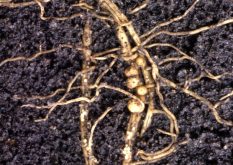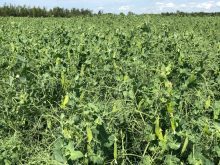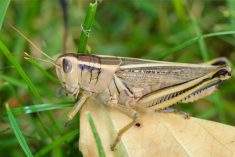The May 2024 edition of Consumer Reports, published by a well-regarded U.S. not-for-profit independent organization, examined “Produce Without Pesticides.” The article carried a lead statement that some 20 per cent of the 59 fruits and vegetables in its ratings posed a high risk for pesticides. It also made the statement that some of our favourite fruits and vegetables carry unhealthy levels of chemicals. Unfortunately, in this article it never did define by what was meant by “unhealthy” and why. The article also stated that produce from Mexico was particularly prone to carry risky or above tolerance levels of pesticide residues.
The Alliance for Food and Farming (AFF), a U.S. farming industry organization, is quoted in the article as pointing out to Consumer Reports that over 99 per cent of foods tested by the U.S. Department of Agriculture (USDA) contained pesticide residues below the legal limits, a.k.a. tolerances. In another statement it was also pointed out there are no “toxic chemicals,” only toxic doses. Anything can be toxic in high enough amounts — such as sugar, salt, medically approved drugs or even allergic reactions to honeybees.
Many people consume sea salt (organic) and prefer it to the iodized common table salt. Sea salt contains parts per billion of lead, arsenic and cadmium — all poisonous chemicals. The allowable level for lead in sea salt is actually one part per million. Sea salt may contain mercury — that’s why we limit our intake of swordfish or tuna, because of mercury levels. Some Prairie rivers have natural high levels of mercury; that’s why you are advised to limit how often you may eat fish from certain rivers. Rice invariably contains arsenic and for some rice-producing areas you are advised not to eat rice more than two or three times a week. We all know that Prairie-wide, soils contain the nutrients essential for plant growth that number 16-18 or more. Unfortunately, these same soils normally contain toxic chemicals such as cadmium, arsenic, lead and mercury, usually in parts per billion. This is true of any natural soil worldwide.
Read Also

Gentle treatments for pain in the neck
Heading toward year-end, people unknowingly tense up against the cold and busyness, causing neck pain that can often be treated with appropriate support and gentle mobility, athletic therapist Kathlyn Hossack says.
So, when we find a trace toxic chemical or pesticide in a food, it doesn’t mean it’s unsafe to eat. Our very own bodies produce harmful chemicals such as formaldehyde or hydrogen sulphide as normal parts of our metabolism. Plants themselves produce pesticides, such as in potato or tomato foliage; nettles produce formic acid for painful stings; the pits of peach, plum and apple contain highly toxic cyanides, all to prevent them from being eaten.
Sometimes we take our definition of pesticides and regulation a lot too far. For example, potassium bicarbonate, frequently used by the spoonful in baking food, is an effective chemical for the control of powdery mildew in roses and other plants. Because potassium bicarbonate is classified as a pesticide in the U.K., users are obliged to wear coverall suits, gloves and facemasks when applying the “baking powder.” Can you imagine anyone cooking a dessert using gloves and a facemask as well as coveralls?
All pesticides registered in Canada are thoroughly tested for safety and efficacy, and those include organic pesticides. Organic farming actually utilizes certain allowed pesticides, though most pesticides are “natural.” Describing a product as a natural pesticide doesn’t tell you anything about its safety on the organic products you consume.
Just because a pesticide chemical or product is naturally occurring doesn’t mean it’s safer than a man-made pesticide chemical. Thus, “natural” pesticides are scrutinized just as thoroughly as the manufactured pesticides.
One of the surprises in research conducted by USDA a few years back was that many organic foods contained trace levels of pesticides similar to conventionally grown products. Those could have come from pesticide residues in the environment or accidental contamination or plain and simple mix-ups. Another strange finding of USDA on Certified Organic foods was that 99.2 per cent of the organic samples taken in the U.S. would have met the tolerance requirements for all crops, but interestingly, 96.3 per cent of conventional (non-organic) food samples passed that very same test. In other words, the food we eat, whether conventionally grown or organically grown, is just about equally pesticide-free — that is, pesticide residues are below the tolerance limits in both growing systems. Canada’s pesticide check system is in lockstep with USDA for the most part, with a few exceptions.
Unfortunately, pesticides are subject to periodic bouts of fearmongering, such as the recent misinformation on so-called glyphosate residues in food products made from oats.
Unfortunately, after Bayer acquired Monsanto a few years back, it also inherited massive lawsuits claiming the Monsanto product glyphosate was a cancer-causing product. Not a shred of evidence proved it was cancer-causing. The best that the judgment against the product offered was that perhaps it might be a possible carcinogen. Unfortunately, with a deluge of lawyers and more than 100,000 plaintiffs, Bayer has to pay some US$9.5 billion and possibly a further US$6 billion. This was a sort of legal feeding frenzy based on unproven conclusions which, unfortunately, ultimately increase the cost of farming.
Thinking back to when I was born in 1940, there were two billion people in this world. By the 1950s there were famines in India, China and other countries. Now as of 2024 we have about eight billion people and little if any famine except those induced by wars. We live longer and are much better fed, educated and entertained, yet many of us still complain about the quality of life. Some of my older peers even mention the “good old days.” The expression used to set off my grandmother, who lived to be 90, to ask where or how the old days were good, with a tone full of sarcasm. She would reply eventually and state these were the “good new days.”
Just to remind you that in April 2021, the Sri Lankan government declared a ban on conventional fertilizer and pesticides. As a consequence, food crop yields that year dropped dramatically, as much as 50 per cent for rice and corn, leading to widespread food shortages, spiraling food prices — and money-losing farmers.
















